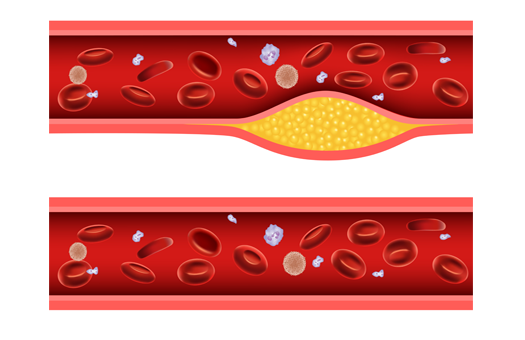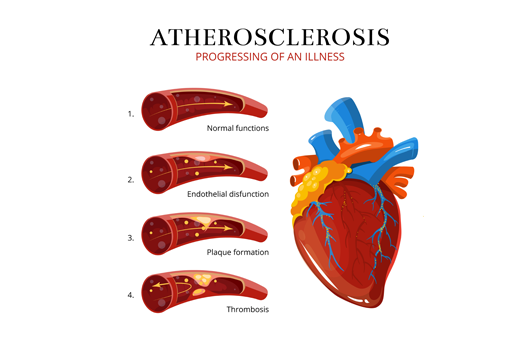
Every year, the mortality rate of heart disease patients are gradually increasing. About 60-70% of heart disease sufferers have acute heart failure and pass away with no leading symptoms. We used to think that the main cause of coronary artery disease was due to high cholesterol that has accumulated and blocked the blood vessels.
However, according to recent research, it has been found that the real cause comes from chronic inflammation of the artery walls. The precipitating factors are as follows:
-
Trans fats that is often found in non-dairy creamer, margarine and processed oil
-
Triglyceride
-
Sugar and insulin
-
Toxins and free radicals
-
Acidosis, which comes from food and the metabolic mechanism, which includes tissue hypoxia in those who have a snoring problem or obstructive sleep apnea.
-
Sex hormones imbalance
-
High level of Homocysteine due to imbalance in the body related to metabolism of amino acids
-
Irritable bowel syndrome and the imbalance of microorganisms in the alimentary canal
-
Stress and inadequate sleep

What are the symptoms of coronary artery disease?
As mentioned above, about 60-70% of sufferers stand a chance of having acute heart failure that could cause immediately death although without having any leading signs or symptoms.
In turn 30-40% of sufferers might experience the following:
-
Chest pain or pressure around the left side of the chest
-
Pain or discomfort in the middle of the xiphoid process
-
Splitting pain on the shoulder blade or left arm.
-
Lethargy and tiredness
-
Might have swollen feet
-
Breathlessness while lay down
-
Cough with reddish pink sputum color

Diagnosis
For sufferers with symptoms, coronary heart disease can be diagnosed from the symptoms plus specific laboratory examinations. For examples are as follows:
-
Electrocardiography (ECG) during normal activities and while undergoing exercises also known as the exercise stress test
-
Blood testing to examine the cardiac enzyme (cardiac marker)
-
Angiography to examine the circulation of the coronary artery
These diagnostic techniques can indicate the problems or diagnose the patients who have coronary artery disease. However, for those who are at risks but without constriction in the blood vessels, diagnosis through these techniques may not be sufficient.
As discussed, we now know that the cause of coronary artery disease comes from the inflammation of the artery walls. Therefore, we can measure the level of inflammation through C-reactive protein (Hs-CRP) which is a new technique in assessing the risk of coronary artery disease. Other risk factors that should be taken into consideration are as follows:
-
sugar and insulin level
-
homocysteine level
-
hormone balance level
-
levels of other toxins in the body
We can then assess the risk factors before the disease occurs, which in turn can act as a preventive tool.

Preventive care through Integrative Medical
With Integrative Medicine, treatments are also carried out on other secondary diagnosed risk in order to treat from the very root of the disease. For example: Nutritional therapy is used to correct insulin resistance, which is a cause of diabetes. Oxidation therapy is used to adjust the immunity and reduce the inflammation of the blood vessels. Chelation therapy and anti-oxidants are used to eliminate the toxins and free radicals, which can cause inflammation on the artery walls.
The main objective of our treatment is to correct the problem from the roots and reverse the deterioration caused by chronic inflammation of the artery walls before the blood vessels are constricted.



Sign In
Create New Account